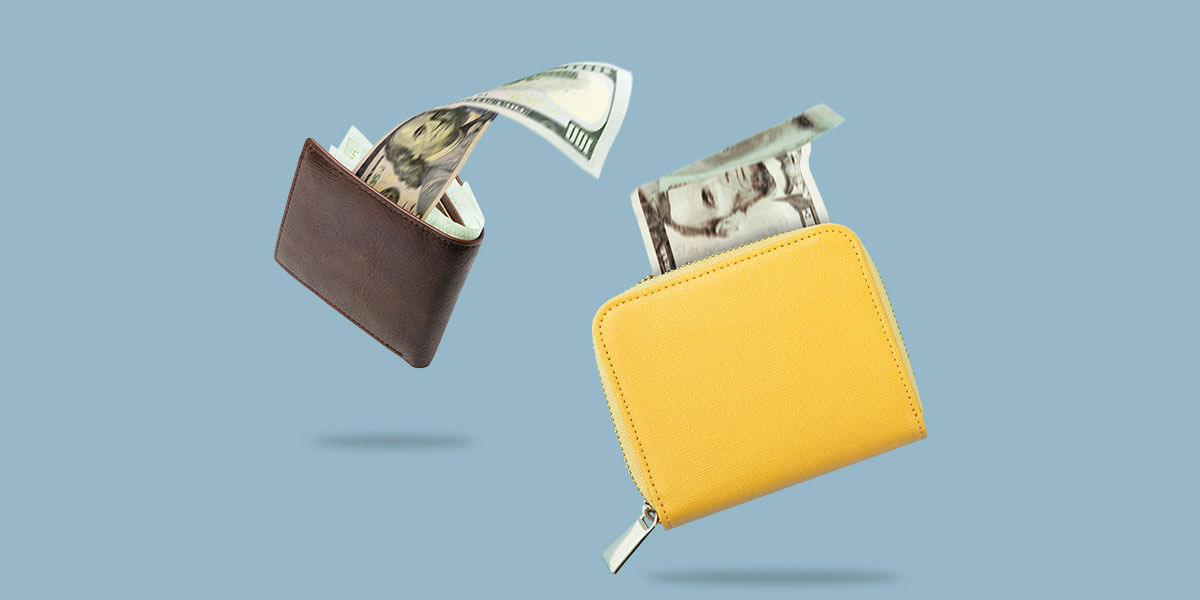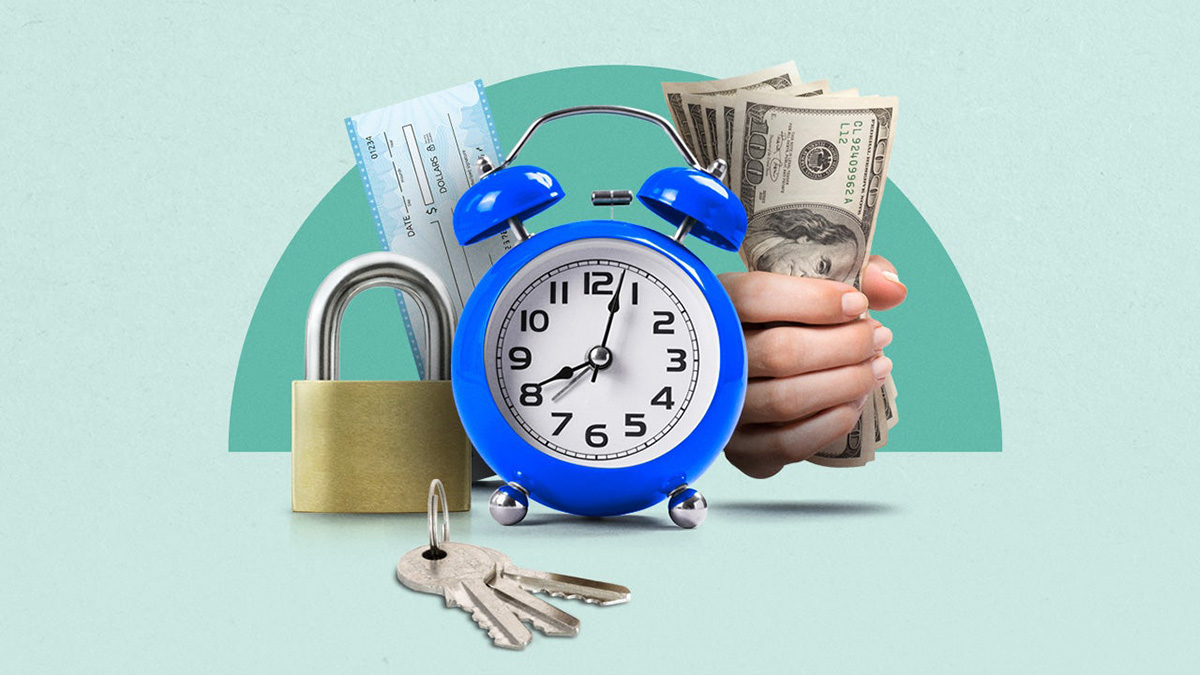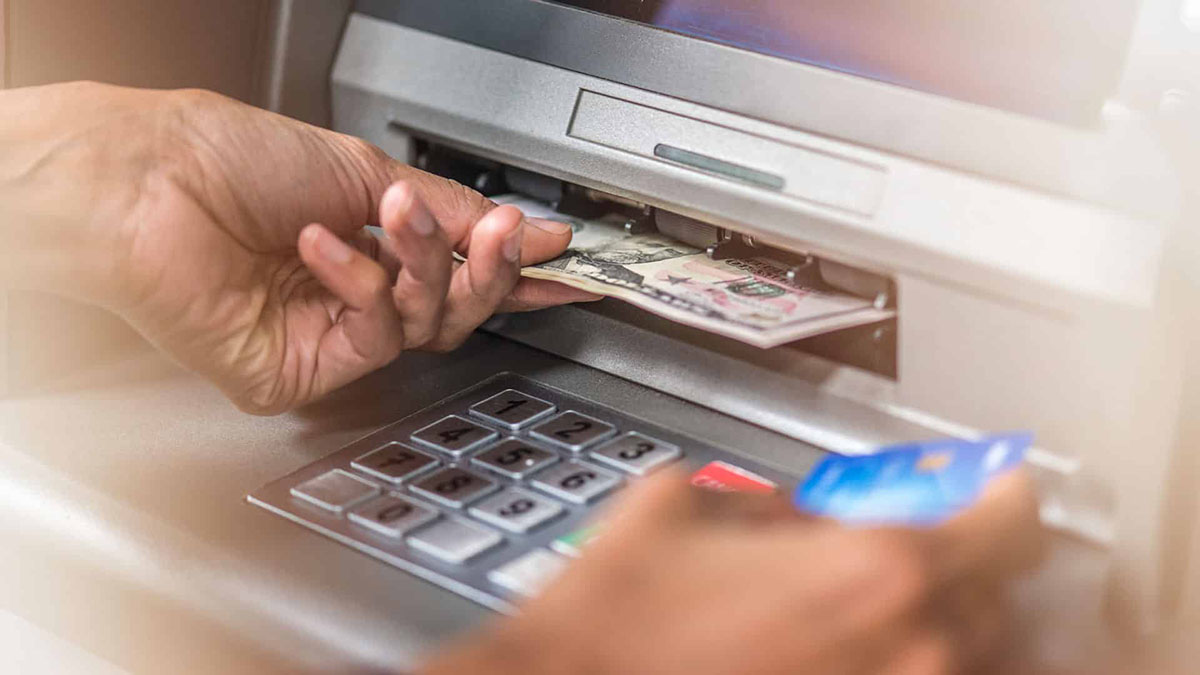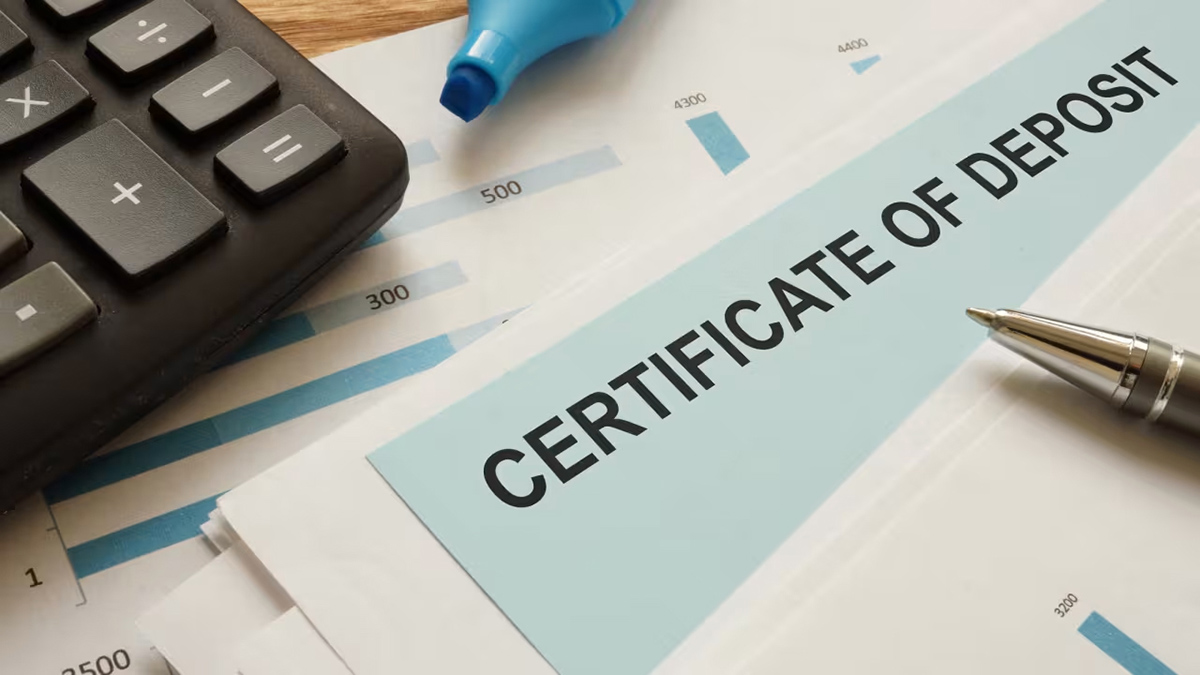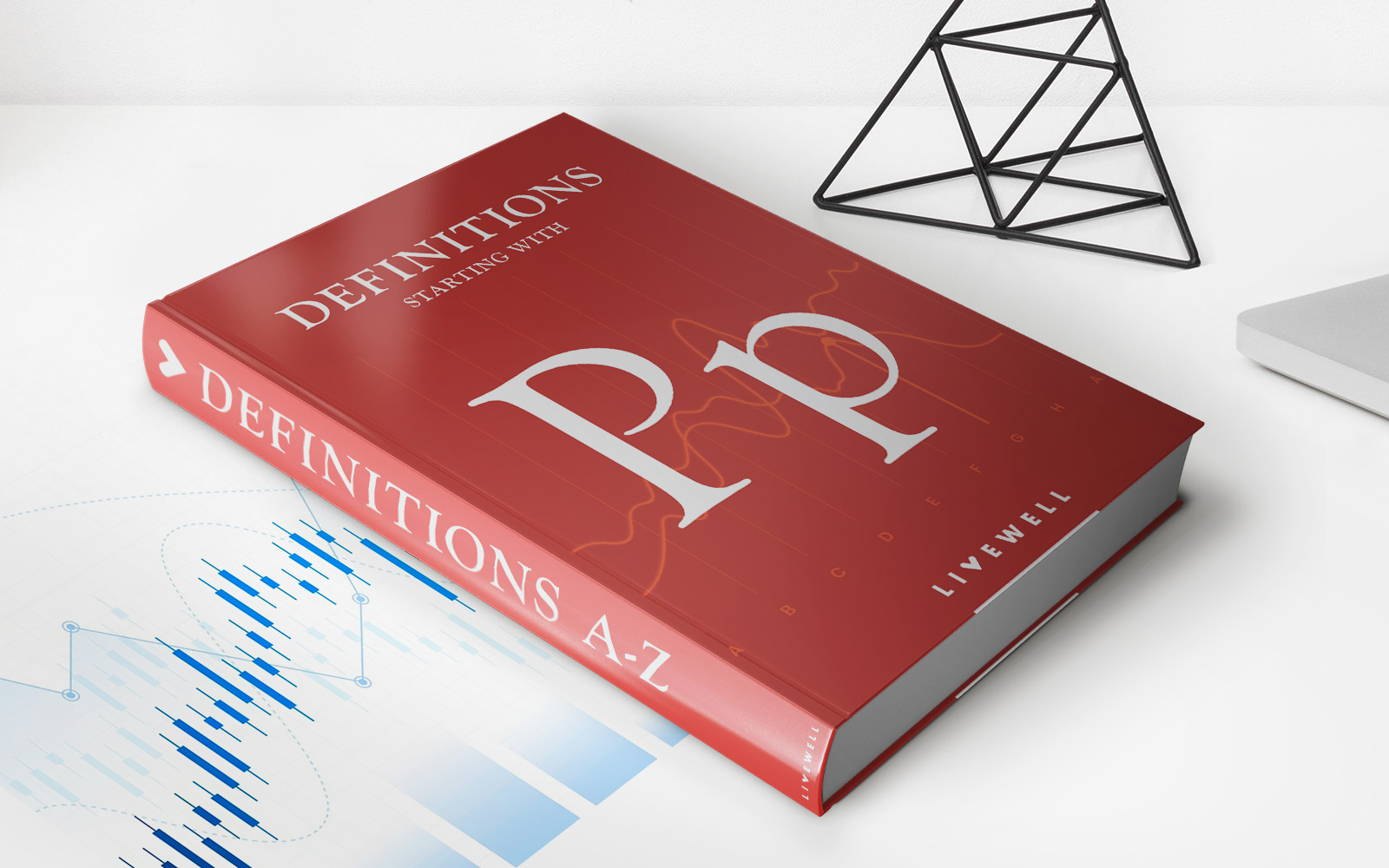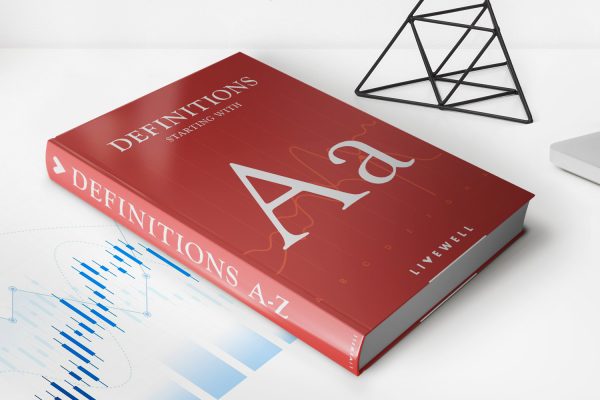Home>Finance>What Are Certificates Of Deposit From Chase Bank


Finance
What Are Certificates Of Deposit From Chase Bank
Modified: December 29, 2023
Looking for information on certificates of deposit? Discover how Chase can help you with your finance goals through flexible and secure CD options.
(Many of the links in this article redirect to a specific reviewed product. Your purchase of these products through affiliate links helps to generate commission for LiveWell, at no extra cost. Learn more)
Table of Contents
- Introduction
- What is a Certificate of Deposit?
- How do Certificates of Deposit Work?
- Benefits of Certificates of Deposit
- Types of Certificates of Deposit Offered by Chase
- Minimum Deposit Requirements
- Interest Rates and Terms
- Accessing Funds Before Maturity
- Risks and Considerations
- How to Open a Certificate of Deposit with Chase
- Conclusion
Introduction
Welcome to the world of savings and investment! As you embark on your financial journey, it’s crucial to understand various investment options, one of which is a Certificate of Deposit (CD). In this article, we will explore the concept of Certificates of Deposit offered by Chase Bank and how they can benefit you.
A Certificate of Deposit is a popular financial product that allows individuals to earn interest on their savings over a fixed period of time. It is a safe and secure investment option offered by banks, including Chase, and is especially ideal for those looking for low-risk investment opportunities.
With a Certificate of Deposit, you deposit a specific amount of money into an account for a predetermined period known as the term. During this term, your money earns interest at a fixed rate, which is usually higher than traditional savings accounts. At the end of the term, you receive your initial deposit along with the accumulated interest.
So, why should you consider a Certificate of Deposit? Well, it offers several advantages that make it an attractive investment choice. First and foremost, it provides a guaranteed return on your investment. Unlike other investments, the interest rate on a Certificate of Deposit is fixed, so you know exactly how much you will earn over the term.
Secondly, a Certificate of Deposit is a safe and secure option. Since it is offered by banks, it is FDIC insured up to $250,000 per depositor, providing peace of mind in case of any unforeseen events. This makes it an excellent choice for risk-averse investors who prioritize the safety of their funds.
Furthermore, opening a Certificate of Deposit with Chase is convenient and hassle-free. They have a wide range of offerings, including different term lengths and competitive interest rates. Whether you’re saving up for a specific goal, such as buying a new car or planning for retirement, a Certificate of Deposit can help you achieve your financial objectives.
In the following sections, we will delve deeper into how Certificates of Deposit work, the benefits they offer, the types of Certificates of Deposit provided by Chase, minimum deposit requirements, interest rates and terms, accessing funds before maturity, and the process of opening a Certificate of Deposit with Chase. Let’s dive in and explore the world of Certificates of Deposit!
What is a Certificate of Deposit?
A Certificate of Deposit (CD) is a financial instrument that allows individuals to earn interest on their savings over a fixed period of time. It is offered by banks and other financial institutions as a safe and secure investment option. When you open a Certificate of Deposit, you are essentially loaning money to the bank for a predetermined term, and in return, the bank pays you a fixed interest rate on your deposit.
The key feature of a Certificate of Deposit is its fixed term. The term can vary from a few months to several years, during which your money remains locked in the account. Unlike regular savings accounts, you cannot withdraw funds from a Certificate of Deposit before the maturity date without incurring a penalty. This ensures that the funds stay invested and helps you to build a disciplined savings habit.
One of the main advantages of a Certificate of Deposit is the fixed interest rate it offers. The interest rate for a Certificate of Deposit is predetermined and remains constant throughout the term. This means you know exactly how much interest you will earn over the course of the investment. The interest rates for Certificates of Deposit are generally higher than those of regular savings accounts, making them an attractive option for individuals looking to grow their savings.
Another important aspect of Certificates of Deposit is their safety. When you invest in a Certificate of Deposit, your funds are typically insured by the Federal Deposit Insurance Corporation (FDIC) up to $250,000 per depositor, per bank. This insurance provides protection in case the bank fails, giving you peace of mind that your investment is secure.
Certificates of Deposit come in various forms, including traditional CDs and special CDs. Traditional CDs have a fixed interest rate and term, while special CDs may offer more flexibility in terms of interest rate structures or early withdrawal options. These variations allow individuals to choose a Certificate of Deposit that aligns with their financial goals and risk tolerance.
In the next sections, we will explore how Certificates of Deposit work, the benefits they offer, the types of Certificates of Deposit provided by Chase, minimum deposit requirements, interest rates and terms, accessing funds before maturity, and the process of opening a Certificate of Deposit with Chase. Let’s continue our journey into the world of Certificates of Deposit!
How do Certificates of Deposit Work?
Certificates of Deposit (CDs) work by allowing individuals to deposit a specific amount of money into an account for a fixed period of time, during which the funds earn interest at a predetermined rate. Here’s a breakdown of how CDs work:
1. Opening a CD: To open a Certificate of Deposit, you need to choose the bank where you want to invest and determine the desired term for your investment. The term can range from a few months to several years, depending on your preference and financial goals.
2. Deposit Amount: Next, you need to decide how much money you want to invest in the CD. Some banks may require a minimum deposit amount, while others may offer flexibility in deposit sizes. It’s important to consider your financial situation and objectives when determining the deposit amount.
3. Fixed Interest Rate: Once you’ve made the deposit, the bank will offer you a fixed interest rate for the duration of the CD term. This interest rate will not change during the term and is typically higher than that of a regular savings account. It’s important to carefully consider the interest rate offered, as it will determine the return on your investment.
4. Term Length: The length of the CD term is a crucial aspect of how CDs work. During the term, your money remains locked-in, and you cannot withdraw it before the maturity date without incurring a penalty. This helps to discourage early withdrawal and encourages long-term savings. It’s essential to choose a term length that aligns with your financial goals and liquidity needs.
5. Interest Compounding: The interest on your Certificate of Deposit can be compounded in different ways. Compound interest means that your interest can be added to the principal amount, allowing it to earn additional interest. Compounding can occur on various frequencies, such as monthly, quarterly, or annually. The frequency of compounding will impact the overall growth of your investment.
6. Maturity and Renewal: At the end of the CD term, the investment reaches maturity. When a CD matures, you have several options. You can choose to withdraw the funds along with the accumulated interest, renew the CD for another term, or reinvest the funds in a different investment. It’s important to evaluate your financial goals and the current market conditions to make an informed decision.
7. FDIC Insurance: CDs offered by FDIC member banks are insured by the Federal Deposit Insurance Corporation up to $250,000 per depositor, per bank. This insurance provides an extra layer of security, ensuring that your funds are protected in case the bank fails.
Now that you have a better understanding of how Certificates of Deposit work, including the terms, interest rates, and the effects of compounding, you can make a well-informed decision about investing in a CD. Proceeding with caution and carefully considering your financial goals will help you maximize the benefits of this investment option.
Benefits of Certificates of Deposit
Certificates of Deposit (CDs) offer several advantages that make them a popular investment choice for individuals looking to grow their savings in a safe and secure manner. Let’s explore the key benefits of Certificates of Deposit:
1. Guaranteed Returns: One of the significant benefits of investing in a CD is the guaranteed return on your investment. Unlike other investment options that are subject to market fluctuations, the interest rate on a CD is fixed for the duration of the term. This ensures that you know exactly how much you will earn on your investment, providing predictability and peace of mind.
2. Higher Interest Rates: Certificates of Deposit generally offer higher interest rates compared to traditional savings accounts. This means that your savings can grow at a faster pace, allowing you to maximize the return on your investment. The longer the term of the CD, the higher the interest rate tends to be, providing an incentive for individuals with long-term saving goals.
3. Risk Mitigation: Investing in Certificates of Deposit carries lower risk compared to other investment options such as stocks or bonds. With a CD, your principal amount is safe and secure, and your investment is typically insured by the Federal Deposit Insurance Corporation (FDIC) up to $250,000 per depositor, per bank. This protection ensures that even in the event of a bank failure, your funds are safeguarded.
4. Variety of Terms: CDs offer flexibility when it comes to choosing the term length. Whether you are looking for short-term savings goals or long-term investment plans, you can find a CD term that suits your needs. This variety allows you to align your investment with your financial goals and time horizon.
5. Discipline and Savings Habit: Certificates of Deposit can help you build a disciplined savings habit. The fixed term and penalties for early withdrawal discourage impulsive spending and encourage you to keep your funds invested until maturity. This can be beneficial for individuals who struggle with saving regularly and need a structured approach to reach their financial goals.
6. Diversification: Adding Certificates of Deposit to your investment portfolio can provide diversification. By diversifying your investments across different asset classes, including CDs, you can spread your risk and potentially achieve a more balanced return. CDs can be a stable and low-risk component of a well-diversified portfolio.
7. Easy Accessibility: CDs offer easy accessibility as they are widely available from various financial institutions, including Chase. Opening a Certificate of Deposit is a straightforward process, and you can manage your account online or through mobile banking applications. This convenience allows you to track your investment and make informed decisions based on your financial needs.
Overall, Certificates of Deposit provide a secure and reliable way to grow your savings. Whether you are looking for short-term savings goals or long-term investment strategies, CDs offer guaranteed returns, higher interest rates, risk mitigation, flexibility in terms, promotion of savings discipline, diversification, and easy accessibility. Before investing, it’s important to evaluate your financial goals and consider the terms and conditions of the specific CD offered by your chosen financial institution.
Types of Certificates of Deposit Offered by Chase
Chase Bank offers a range of Certificates of Deposit (CDs) with different features and terms to suit the needs of various investors. Let’s explore some of the types of Certificates of Deposit offered by Chase:
1. Traditional CDs: Chase offers traditional CDs, which are the most common type of Certificate of Deposit. These CDs have a fixed interest rate and term length, typically ranging from a few months to several years. Traditional CDs provide stability and predictability in terms of returns and are suitable for individuals who prefer a straightforward investment option.
2. Jumbo CDs: For individuals with a larger amount to invest, Chase offers Jumbo CDs. These CDs require a minimum deposit that is higher than the regular CDs. In return, Jumbo CDs typically offer higher interest rates compared to traditional CDs. Jumbo CDs are ideal for those looking to maximize their returns on a larger investment amount.
3. Flex CDs: Chase also provides Flex CDs, which offer more flexibility than traditional CDs. These CDs allow you to make a one-time withdrawal of up to 20% of the principal balance without incurring a penalty. Flex CDs are suitable for individuals who may need access to a portion of their funds before the maturity date while still benefiting from the stability of a CD.
4. Step-Up CDs: Step-Up CDs offered by Chase come with an increasing interest rate over time. The interest rate on the CD may increase after a specific period, providing the opportunity for higher returns. Step-Up CDs are beneficial for individuals who anticipate an upward trend in interest rates and want to take advantage of potential rate increases.
5. IRA CDs: Chase offers Certificates of Deposit as part of Individual Retirement Accounts (IRA). IRA CDs provide individuals with a tax-advantaged way to save for retirement. They come with specific rules and regulations regarding contribution limits and withdrawal penalties. IRA CDs are an excellent option for individuals who want to secure their retirement funds while earning interest.
When choosing a Certificate of Deposit from Chase, it’s essential to consider your financial goals, risk tolerance, and liquidity needs. Evaluate the features and terms of each type of CD and select the one that aligns with your investment objectives. Additionally, make sure to review the specific terms and conditions of the CD offered by Chase to understand any requirements or restrictions that may apply.
Remember that the availability of these types of Certificates of Deposit may be subject to change, and it’s advisable to check with Chase for the most up-to-date information on the CD products they offer.
Minimum Deposit Requirements
When considering opening a Certificate of Deposit (CD) with Chase Bank, it’s important to be aware of the minimum deposit requirements. The minimum deposit is the minimum amount of money that you need to contribute in order to open a CD account. Here are some key points regarding minimum deposit requirements for Chase CDs:
1. Traditional CDs: Chase offers traditional CDs with varying minimum deposit requirements. The exact minimum deposit amount may vary depending on factors such as the term length and the type of CD. Generally, Chase’s traditional CDs have minimum deposit requirements that can range from a few hundred dollars to several thousand dollars.
2. Jumbo CDs: Jumbo CDs are designed for individuals who have a larger amount of money to invest. These CDs typically have higher minimum deposit requirements compared to traditional CDs. Chase’s Jumbo CDs typically require a minimum deposit that is significantly higher than the minimum requirement for regular CDs. The exact minimum deposit for Jumbo CDs may vary depending on the amount being invested and other factors.
3. Flex CDs: For Flex CDs, the minimum deposit requirement is typically the same as that for traditional CDs. However, it’s important to note that the minimum deposit requirement is not the only consideration for Flex CDs. These CDs have specific withdrawal rules and penalties, so it’s crucial to understand the terms and conditions before opening an account.
4. Step-Up CDs: Minimum deposit requirements for Step-Up CDs offered by Chase are typically in line with the requirements for traditional CDs. As with other types of CDs, the exact minimum deposit amount may differ based on factors such as the term length and the specific offering at the time.
5. IRA CDs: Chase offers IRA CDs as part of Individual Retirement Accounts. The minimum deposit requirement for IRA CDs may differ from the requirements for regular CDs. It’s important to consult with Chase directly or review the terms and conditions to determine the specific minimum deposit requirement for IRA CDs.
Minimum deposit requirements are an important consideration when opening a Certificate of Deposit with Chase. It’s crucial to ensure that you have the required minimum deposit amount available before proceeding with the application. By meeting the minimum deposit requirement, you can take advantage of the benefits of CDs, such as guaranteed returns and higher interest rates, to help grow your savings.
Keep in mind that minimum deposit requirements can vary over time and are subject to change. It is recommended to check with Chase for the most up-to-date information on their minimum deposit requirements for Certificates of Deposit.
Interest Rates and Terms
When considering a Certificate of Deposit (CD) from Chase Bank, it’s important to understand the interest rates and terms associated with these investments. Interest rates and terms play a crucial role in determining the return on your investment and the duration of your commitment. Here’s what you need to know:
1. Interest Rates: Chase offers competitive interest rates on their CDs, which are predetermined and fixed for the duration of the term. The interest rates may vary depending on the type of CD, the term length, and current market conditions. Generally, longer-term CDs tend to offer higher interest rates compared to shorter-term CDs. It’s crucial to consider the interest rate offered and how it aligns with your financial goals and expectations for return on investment.
2. Term Length: The term length refers to the duration of time that your money is invested in the CD. Chase offers a range of term lengths for their CDs, including short-term options of a few months and longer-term options that can extend up to several years. The term length you choose will depend on your financial objectives and your willingness to lock in your funds for a specific period. Longer terms may provide higher interest rates, but they also require a longer commitment.
3. Promotional Rates: Chase occasionally offers promotional rates on select CDs. These promotional rates may provide higher interest rates than the standard rates for a limited period. Promotional rates can be attractive for individuals looking for short-term opportunities to earn higher returns. It’s essential to review the terms and conditions of any promotional rates, as they may have specific requirements or limitations.
4. Rate Bump Options: Some CDs offered by Chase may include rate bump options. Rate bump options allow you to increase your interest rate during the term of the CD if the bank decides to raise the rates. This can be a valuable feature if you anticipate interest rates to rise in the future. To take advantage of rate bump options, make sure to carefully review the terms and conditions of the specific CD offering.
5. Compounding and Payout Options: Chase offers different compounding and payout options for their CDs. Compounding refers to the process of reinvesting the interest earned back into the CD, allowing it to grow over time. Chase provides various compounding frequencies, such as monthly, quarterly, and annually. Additionally, you can choose to have your interest credited to a separate account, paid out to you at regular intervals, or added to the principal amount when the CD matures.
It’s important to carefully consider the interest rates and terms associated with a Certificate of Deposit before making a decision. Evaluate your financial goals, liquidity needs, and risk tolerance to determine the most suitable term length and interest rate structure for your investment. By understanding the interest rates and terms offered by Chase, you can make an informed decision to maximize your earnings and achieve your financial objectives.
Note that interest rates and terms can change over time, and it’s advisable to check with Chase or review their website for the most up-to-date information on their CDs.
Accessing Funds Before Maturity
When you invest in a Certificate of Deposit (CD), it’s important to be aware that accessing your funds before the maturity date may come with certain restrictions and penalties. While CDs are designed to be long-term investments, unexpected situations or changing financial needs may require you to access your funds before the agreed-upon term. Here’s what you need to know about accessing funds before maturity with Chase CDs:
1. Early Withdrawal Penalties: If you need to access your funds before the CD reaches its maturity date, you will likely face early withdrawal penalties. These penalties are in place to discourage investors from withdrawing their funds before the agreed-upon term. The specific penalty amount may vary depending on the type of CD and the remaining time until maturity. It’s important to carefully review the terms and conditions of your CD to understand the penalties that apply.
2. Penalty Structure: Chase’s penalty structure for early withdrawals from CDs typically involves deducting a certain number of days’ worth of interest from the principal amount. The exact penalty amount will depend on factors such as the remaining term of the CD and the prevailing interest rates. It’s important to note that the penalty can reduce the overall return on your investment, so careful consideration should be given before deciding to withdraw funds early.
3. Exceptions and Flexibility: While early withdrawal penalties generally apply to CDs, some Chase CDs may offer more flexibility and exceptions. For example, Chase offers Flex CDs, which allow for partial withdrawals without incurring a penalty, up to a certain limit. Flex CDs are designed to provide some liquidity during the term of the CD. However, it’s important to review the specific terms and conditions of the CD to understand the withdrawal rules and any associated penalties or limitations.
4. Considering Alternatives: If you anticipate needing access to your funds before the agreed-upon term, it might be beneficial to explore other investment options that provide more flexibility. Traditional savings accounts, money market accounts, or even certain types of bonds may offer easier access to your funds without the same level of penalties. It’s important to evaluate your financial goals, liquidity needs, and risk tolerance when determining the most suitable investment option.
When investing in a CD, it’s advisable to carefully consider your financial circumstances and needs to ensure that you can commit to the full term of the CD. However, unexpected situations can arise, and you may need to access your funds before maturity. In such cases, it’s important to be aware of the early withdrawal penalties and any options for partial withdrawals that may be available with certain Chase CDs.
Remember to review the specific terms and conditions of your CD or consult with Chase directly to fully understand the consequences of accessing your funds before maturity.
Risks and Considerations
While Certificates of Deposit (CDs) offer a range of benefits, it’s essential to be aware of the risks and considerations associated with these investments. Understanding these factors can help you make informed decisions and manage your financial goals effectively. Here are some important risks and considerations to keep in mind when investing in CDs:
1. Fixed Returns: While the fixed interest rate on CDs provides stability, it also means that your returns are locked in for the duration of the term. If interest rates increase during that time, you may miss out on the opportunity to earn higher returns. It’s important to consider the interest rate environment and evaluate whether locking in your funds for an extended period aligns with your financial goals.
2. Inflation Risk: CDs are not immune to inflation risk. Inflation erodes the purchasing power of money over time, meaning that the fixed interest rate offered by CDs may not keep up with inflation. This can result in a decline in the real value of your investment. Consider the potential impact of inflation on the purchasing power of your funds when deciding on the term length and interest rates offered.
3. Early Withdrawal Penalties: Accessing funds before the maturity date of a CD can result in early withdrawal penalties. These penalties can reduce your overall returns and potentially erode a portion of your principal investment. It’s important to carefully consider your liquidity needs and financial circumstances before investing in a CD to avoid the need for early withdrawals.
4. Opportunity Cost: By allocating funds to a CD, you may miss out on other investment opportunities. If you have a higher risk tolerance and a longer time horizon, other investments like stocks or mutual funds may offer the potential for higher returns. It’s essential to assess your risk appetite and consider the potential opportunity cost of investing in CDs instead of pursuing more aggressive investment options.
5. Lack of Liquidity: CDs are designed as long-term investment vehicles, and accessing your funds before maturity can be difficult and may incur penalties. If you anticipate needing immediate access to your funds, a CD may not be the most suitable investment choice. Consider your financial goals, emergency fund requirements, and liquidity needs when deciding on the investment duration.
6. FDIC Insurance Limitations: While CDs offered by FDIC member banks are insured up to $250,000 per depositor, per bank, it’s important to consider your overall deposit exposure across different accounts. If you have a significant amount of money spread across multiple accounts at the same bank, it may exceed the FDIC insurance limit. Consider diversifying your deposits across different banks to ensure full coverage for your funds.
7. Market and Interest Rate Risk: While CDs provide a stable and predictable return, they are still subject to market and interest rate risks. If you lock in a long-term CD and interest rates rise significantly, you may miss out on the opportunity to invest in higher-yielding options. It’s important to assess the prevailing interest rate environment and consider the potential impact on your returns.
As with any investment, it’s crucial to carefully assess the risks and considerations associated with CDs to make informed choices. Consider your financial goals, risk tolerance, liquidity needs, and the prevailing market conditions before investing in CDs. Consulting with a financial advisor can also help you navigate the potential risks and make decisions that align with your specific circumstances.
How to Open a Certificate of Deposit with Chase
If you’re interested in opening a Certificate of Deposit (CD) with Chase Bank, the process is straightforward and can be done through various channels. Here’s a step-by-step guide on how to open a CD with Chase:
1. Research and Comparison: Start by conducting research on the types of CDs offered by Chase. Consider factors such as interest rates, terms, minimum deposit requirements, and any special features or benefits that may be applicable. This information will help you make an informed decision based on your financial goals and preferences.
2. Gather Required Information: Before opening a CD, gather the necessary information and documentation. This typically includes your personal identification details, such as your Social Security number, proof of address, and employment information. Having these documents ready will make the application process smoother.
3. Choose the CD Type and Term: From the available CD options, select the type of CD and the term length that aligns with your financial goals and preferences. Consider factors such as your investment objectives, risk tolerance, and expected withdrawal needs to ensure you choose the most suitable CD for your needs.
4. Decide on the Deposit Amount: Determine the amount you wish to deposit into the CD. Review the minimum deposit requirements for the specific CD type you have chosen to ensure your deposit meets the necessary criteria. Consider the amount you can comfortably invest without affecting your daily living expenses or emergency funds.
5. Select the Application Method: Chase offers multiple options for opening a CD. You can choose to apply online through the Chase website, visit a local branch, or contact Chase’s customer service to initiate the application process. Choose the application method that is most convenient for you.
6. Complete the Application: Follow the instructions provided by Chase to complete the CD application. Enter the required information accurately, ensuring that all personal and financial details are entered correctly. Take your time to review the application before submission to avoid any mistakes that could delay the process.
7. Fund Your CD Account: Upon approval of your application, you will need to fund your CD account. This involves transferring the specified deposit amount into the newly opened CD account. You may have the option to fund the account through a transfer from your Chase checking or savings account or by depositing a physical check or money order.
8. Confirm and Review Terms: After funding your CD account, carefully review the terms and conditions provided by Chase. Pay attention to the interest rate, term length, early withdrawal penalties, and any other relevant details. Understanding the terms will help you manage your CD effectively and make informed decisions throughout the investment period.
Opening a Certificate of Deposit with Chase is a straightforward process that can be completed in a few simple steps. By conducting thorough research, gathering the required information, selecting the CD type and term, completing the application, funding your account, and reviewing the terms, you can start your CD investment journey with Chase and work towards achieving your financial goals.
Remember to keep a copy of all documentation related to your CD investment and consult with Chase directly or visit their website for the most up-to-date and accurate information about opening a CD account.
Conclusion
Certificates of Deposit (CDs) offered by Chase Bank present a secure and reliable investment option for individuals looking to grow their savings. The fixed interest rates, variety of terms, and competitive rates make CDs an attractive choice for those seeking stability and predictable returns.
By opening a CD with Chase, you can benefit from guaranteed returns, higher interest rates compared to regular savings accounts, and the comfort of knowing that your funds are FDIC-insured up to $250,000 per depositor, per bank. Additionally, Chase offers a range of CD options, including traditional, jumbo, flex, step-up, and IRA CDs, allowing you to align your investment with your financial goals and requirements.
While CDs provide numerous advantages, there are risks and considerations to keep in mind. Fixed returns, early withdrawal penalties, inflation risk, and the potential opportunity costs should be carefully evaluated before making an investment decision. It’s important to consider your financial goals, risk tolerance, and liquidity needs to determine the most suitable investment option.
To open a CD with Chase, you’ll need to research and compare the available options, gather the required information, choose the appropriate CD type and term, complete the application, and fund your account. Chase provides multiple channels for opening a CD, including online applications, branch visits, and customer service assistance.
In conclusion, Certificates of Deposit offered by Chase Bank present a reliable and secure opportunity to grow your savings. With competitive interest rates, flexible terms, and a variety of CD types available, Chase provides options that cater to the needs of different investors. However, it’s crucial to consider the risks, such as fixed returns and early withdrawal penalties, and carefully assess your financial circumstances and goals before investing in a CD with Chase.
Investing in a CD can be a valuable addition to your overall financial strategy, providing stability and the potential for long-term growth. By understanding the features, benefits, risks, and considerations associated with CDs, you can make informed decisions to secure your future and achieve your financial goals.

